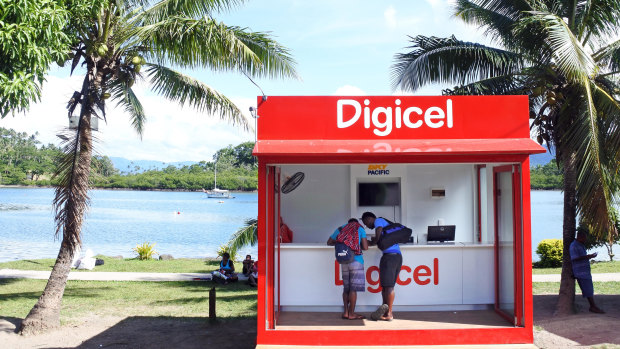Telstra’s Digicel to use Huawei technology despite historic government concerns
Telstra has no immediate plans to replace Digicel Pacific’s Chinese-owned Huawei network equipment with its preferred technology, and will only do so if an upgrade or refresh is needed.
The head of Telstra’s international division Oliver Camplin-Warner said the telco was considering expanding to Latin America as part of a strategy focused on growth, adding the company’s latest acquisition, Digicel, had exceeded expectations in the first couple of months.
“We’ve been really blown away by the quality of the organisation, the leadership team – the personnel that are in place…are second to none,” Camplin-Warner said. “They’re going to be a key part of [Telstra’s international business] moving forward.”

Telstra acquired Digicel in a multi-billion deal with the federal government two months ago, a move designed to prevent Chinese interests from acquiring the mobile provider. Telstra owns 100 per cent of Digicel, but $1.9 billion in funding for the $2.1 billion deal was provided by the government.
Head of enterprise David Burns said acquiring Digicel made commercial sense, but that it would be run “at arm’s length” because of the government loan. Telstra has already committed to rolling out 111 towers deploying 4G technology over the next two years and is weighing up launching 5G.
Digicel uses technology from Chinese-owned Huawei, which was banned from supplying local telcos with equipment for their high-speed 5G networks.
‘In terms of any refreshes or upgrades in future dates – that’s when we’ll look to fall in line with the standard that we have here in Australia.’
Telstra International chief Oliver Camplin-Warner
The government has a long history of issues with Huawei technology. In 2012, then-prime minister Julia Gillard banned Huawei from tenders to build the NBN Co on advice from the Australian Security Intelligence Organisation. A year later, Malcolm Turnbull, as communications minister, said the government would review the ban (though the ban was not overturned).
In 2017, tensions grew after an announcement by the federal government that Australia would manage an undersea cable between Australia and Papua New Guinea. By August 2018, the government had chosen to ban Huawei from participating in supplying local telcos with equipment for their next-generation networks on security grounds. The West Australian government has since terminated a $206 million contract with Huawei to build its rail network.
“In terms of any refreshes or upgrades in future dates – that’s when we’ll look to fall in line with the standard that we have here in Australia,” Camplin-Warner said. Telstra uses Ericsson as its technology provider.
The comments were made in a roundtable discussion at Telstra’s trade event Vantage22, where Camplin-Warner told this masthead the telco was considering expanding its services to Latin America.
“We’re a pretty ambitious bunch, and we recently launched in Canada. We thought that was a key move in terms of some marquee customers but also from a security play as well. We’re having conversations around [Latin America] and potentially entering those markets,” Camplin-Warner said.
“If you look at the International strategy…we are going to grow in wholesale…we are going to grow enterprise. Our third part of the strategy pillar is new markets, so it’s a key part. We’ll see what the future holds.”
Most Viewed in Business
Source: Thanks smh.com